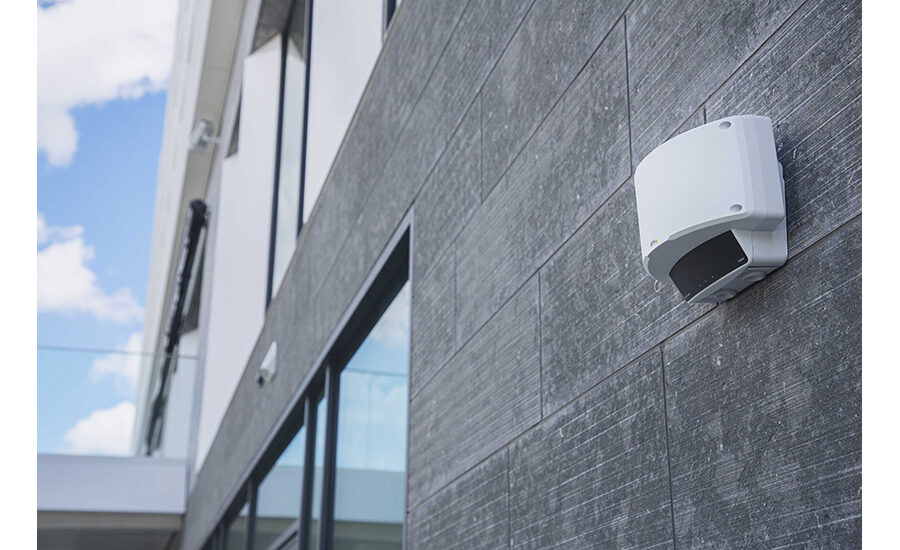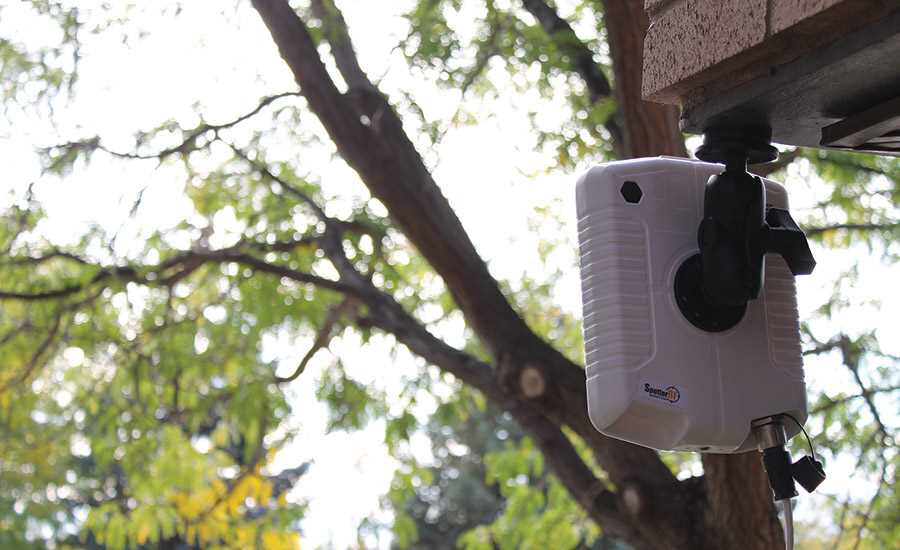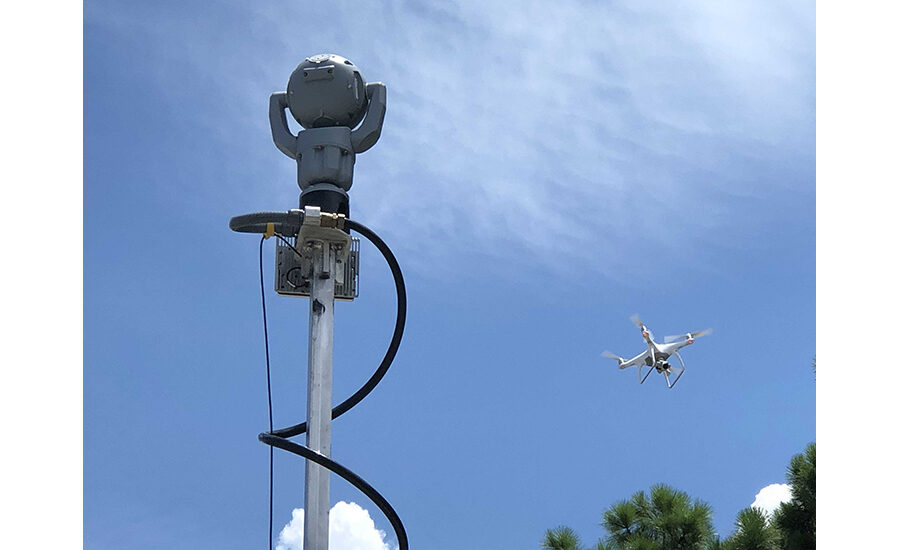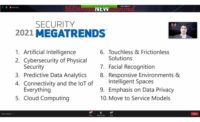Radar sensing technology isn’t new, but it’s yet to hit the mainstream in the security world. Based on radar waves, the technology was developed for military use around the 1940s, and soon started sneaking into other commercial markets. Though many of the big players in the industry do not offer it, innovative companies have found success with the unique solution. And the number of offerings is only growing.
Here, three different manufacturers of security products that rely on radar technology describe the benefits, and make a very convincing case for why integrators should consider adding it to their offerings.
SpotterRF, Orem, Utah
SpotterRF was born in 2009, out of the military’s need for a portable radar system.
“When you think of portability, it needs to be small, lightweight and easy to operate,” says Brad Solomon, SpotterRF’s director of business development. “Radar is not new, but it’s typically known as being large, expensive and complex; so at the time, there were ‘portable radars’ but they weighed more than 65 pounds and required two people, one of them needing to be a trained expert. … We ended up providing a solution that is modular, and weighs one and a half pounds.”
While Spotter RF is still providing solutions for the military, it has also found success in the utility space, protecting critical infrastructure. Its solutions are also deployed at airports, data centers, mining operations, manufacturing facilities, parking lots and even some high-end residential properties.
Solomon says that coupled with video cameras, radar sensors become really powerful in security applications.
“When you start looking at bigger perimeters or maybe poorly lit areas, you need more and more expensive cameras with night vision or IR capability, so the trickier a spot you get into, the more you need,” Solomon explains. “The radar allows you to cover more area with less sensor technology. If I deployed at a football field, I might need seven cameras. Or, I could use one of our small radars and one handheld camera, and it’s covered. So it makes cameras more efficient, and the sensors can tell them where and when to look. Radar is always looking over the whole area so you aren’t going to miss anything — it fills in the gaps.”
Now, the company has almost 2,000 different models of its radars tailored to specific applications, from small parking lots to large fish farms. The sensors are even being used to track polar bears in order to alert residents of their whereabouts and decrease the chances of an attack.
“The product has been so successful in changing mindsets that there are multiple manufacturers now coming out with similar products designed for security,” Solomon says. “Back in 2009, there was no one, and now there are more than a dozen. We really did pave the way for a new product in the space and a new way of doing security, and it’s been very effective. We even changed the mindset of how people respond to security threats. Radar has always been a cool technology, but never commercially available. Now anywhere you can mount a camera, you can mount our radar. It’s not intrusive, complex or costly.”
SpotterRF relies on security systems integrators to install the sensors, as they are just one piece of a much bigger puzzle of most customers’ security systems.
“If your customer has large perimeters and they’re experiencing problems with their legacy systems, then look at radar,” Solomon says. “Our goal is to always solve those problems for [integrators], and prevent harm.”
Echodyne, Kirkland, Wash.
Electronically scanned array (ESA) radar is typically found in the nose cone of fighter jets, missile defense systems and other military equipment. The technology was often thought to be out of reach for critical infrastructure protection and other high risk scenarios due to its large size, weight, power consumption, operational complexity and high cost. Echodyne CEO Eben Frankenberg says his company shattered these barriers with its metamaterials ESA, which creates a radar with the portability of a paperback book and the power consumption of a lightbulb.
“The opportunity we saw with a commercially priced, high performance 3D radar just seemed extraordinary,” Frankenberg says of the thought process he and co-founder Tom Driscoll shared. “The benefits of situational awareness are pretty apparent across defense, government and commercial security professionals. Our innovation creates all-weather, any environment, high accuracy detection, tracking and targeting of ground and air objects that shatters the price-performance barrier for superior situational awareness.”
Frankenberg says there has been an increase in the domestic and international demand for Echodyne radars as commercial security evolves to meet modern requirements.
“The evolution of radars is really in the positive financial contribution of next generation radar technology,” Frankenberg says. “The project finances we have seen demonstrate superior ROI. One project comparison noted an overall 60 percent reduction in cost versus buried or fenced cable, while also adding airspace situational awareness. More projects will add radars for their all-around performance in any weather or lighting condition, and save money doing so.”
Radar sensors will become even more popular in the security world as the threat of drones proliferates, Frankenberg predicts.
“It is very rare that a new threat requires a brand new technology deployment, but that is the case with drones and airspace security,” Frankenberg says. “Now is the time to invest the effort and resources in growing competencies across the organization and learn more about the sensor manufacturers, products and respective track records. Understanding the market dynamics that drive critical infrastructure and other high risk security requirements means learning which manufacturers are likely to be specified in the solution mix, and building those relationships. It’s very likely that the constraints holding back comprehensive 3D security deployments will be lifted in 2021, so now is the time to invest in the skills required to maintain and expand customer relationships.”
Axis Communications, Chelmsford, Mass.
Axis Communications introduced its first IP-based security radar in 2017 with the introduction of the AXIS D2050-VE Network Radar Detector, which detects and provides notification when trespassers step onto a premises. The product serves as a complement to video surveillance, and is compatible with most major VMS suppliers, according to Axis Director of Solutions and Services Ryan Gregory.
The company released the second generation of the radar, the AXIS D2110-VE Security Radar, in July. It features the new generation Axis chip, signed firmware, built-in analytics developed using machine learning and deep learning and smart coexistence functionality, which allows the use of multiple radars in close proximity.
“[Radar] is increasingly used in consumer products because modern radar devices can be small and chip-based,” Gregory says. “Since it’s based on a non-visual technology, radar has a lot to offer in surveillance, working well in many situations where other surveillance technologies may fail, such as in poor lighting, darkness and fog.”
Gregory points out that radar is also stable in situations where video surveillance with analytics software is likely to create false alarms.
“For example, when there are moving shadows or lights in the scene, in bad weather or when there are raindrops or insects on the device,” he says. “Radar also has the benefit of providing surveillance that maintains privacy, because people can’t be identified from the radar information.”
Radar devices are often combined with video cameras for the identification of individuals, and are especially effective with pan-tilt-zoom cameras, which can track and identify people or vehicles based on their exact geographical position provided by the radar. Radars can also be combined with thermal cameras and audio for enhanced detection capabilities. Integrated with VMS, the system can be set up to trigger a range of actions upon detection.
As the technology continues to improve, Gregory suggests integrators start considering radar.
“Radar offers the integrator an opportunity to address outdoor ‘detection-based’ use cases that have been difficult to overcome in the past with traditional video-based analytics or cameras alone,” Gregory says. “With the trend of radars incorporating machine and deep learning for object detection and classification, their integration into video-based systems is very natural and ROI is easily experienced with a properly installed system and well thought out use case and objectives.”






